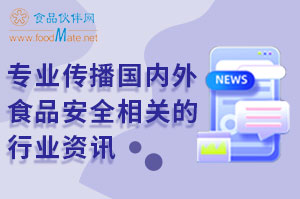食品伙伴网讯 据欧盟食品安全局(EFSA)消息,应欧委会的要求,7月20日欧盟食品安全局就膨润土(bentonite)作为技术性饲料添加剂发布了意见。
膨润土是一种胶质粘土,主要成分为蒙脱土。目前被批准作为饲料中的粘结剂、防结块剂以及凝聚剂,最大添加量为20 g/kg。
部分原文报道请见:
Following a request from the European Commission, the Panel on Additives and Products or Substances used in Animal Feed (FEEDAP) was asked to deliver a scientific opinion on the safety, for target animals, consumer, users and the environment, and the efficacy of a group of bentonites. Bentonites are colloidal and plastic clay materials composed largely of montmorillonite (a species of dioctahedral smectite). The properties of bentonites can vary considerably depending on geological origin and any post-extraction modification, and their individual characteristics have a marked bearing on their economic use. Bentonites (E558) are currently authorised for use as feed additives, with the name “Bentonite-montmorillonite”, as binders, anti-caking agents and coagulants under the category technological additives to a maximum of 20 g/kg feedingstuffs. They are also authorised for use as food additives.
A consortium of companies concerned with the sourcing and supply of bentonites to the feed industry is now seeking the re-authorisation of bentonite as a technological additive (functional groups: binders and anti-caking agents) and authorisation for a new application for the control of radionuclide contamination.
The results of studies submitted by the applicant showed that both chickens and piglets tolerate bentonite addition at 3 % of diet and dairy cows tolerate bentonite at 2 % of total intake. Although these studies were carried out using a single sample of bentonite, its composition was typical of most other bentonites described in this application, and so these results are considered to extend to other bentonites. Other data from the literature show that trout tolerate bentonite at 2.5 % of diet (the lowest concentration studied). However, in poultry, 0.5 % bentonite reduces manganese availability in chickens for fattening. Given that any authorisation will be for bentonites limited only by specification and that the application is for all animal species, and as a margin of safety is difficult to establish, the FEEDAP Panel considers that the presently authorised limit of 2 % of diet (20 000 mg/kg complete feed) should be retained.
The data available suggest that addition of bentonites to diets is incompatible with the use of robenidine as a coccidiostat. Levels of bentonite higher than 0.5 % are also expected to reduce the effectiveness of other coccidiostats.
The FEEDAP Panel considers that there is no reason to be concerned for the safety of consumers of food products derived from animals fed diets containing bentonite.
Bentonites are not skin irritants but may be mildly irritant to the eye. Although skin sensitisation was not considered, the Panel notes that bentonites are widely used in cosmetics. However, the Panel considers it prudent to assume that all bentonite dusts pose a hazard to those handling the additive.
Bentonite is ubiquitous in the environment, being a natural component of soil. Therefore, it is not expected that its use as a feed additive would adversely affect the environment.
Bentonites can increase pellet durability when added to complete feed at concentrations of between 1 % and 2 %. Since bentonites are authorised for use as anti-caking agents in food without restriction and can be reasonably assumed to demonstrate similar properties when applied to feed or feed materials which show a tendency to cake, no further demonstration of efficacy is considered necessary. Bentonites added to feed contaminated by radioactive fallout or made available to grazing animals will reduce levels of radiocaesium in animals and their products. Since the use of bentonites for this purpose will be restricted to emergency situations, the FEEDAP Panel does not see a reason to set a maximum limit.
The Panel recommends that the definition of a bentonite for feed use should specify a minimum smectite content of 70 % and that restrictions should be placed on the concurrent use of bentonites with coccidiostats and some other medicinal substances.










 地区:
地区:






 鲁公网安备 37060202000128号
鲁公网安备 37060202000128号



